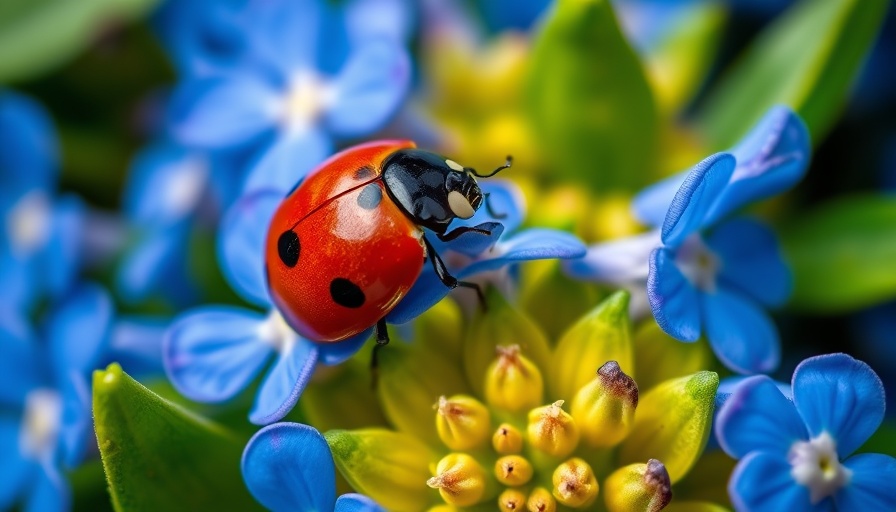
Understanding the Role of Ladybirds in Your Garden
Did you know that ladybirds are among the most effective natural pest controllers? These tiny, brightly colored beetles feast on pests like aphids, making them invaluable allies for gardeners. In this article, we’ll explore how planting specific flowering plants can invite ladybirds into your space, enhancing not only pest control but also biodiversity in your garden.
5 Flowering Plants to Attract Ladybirds
If you want to turn your garden into a haven for ladybirds, consider planting these five flowers which not only add beauty but also support these beneficial insects:
Dill and Fennel
Known for their aromatic qualities, dill and fennel are especially appealing to ladybirds. These herbs do more than just smell good; they attract aphids, which are a favorite snack for ladybirds. Additionally, the arrangement of their flowers provides extra food sources, such as nectar and pollen, particularly in the early spring when food might be sparse. Essentially, planting dill and fennel creates a welcoming environment for ladybirds, assisting in natural pest control while also enhancing your garden's aesthetic.
Nasturtium
Nasturtiums stand out not only for their vibrant colors but also for their dual function in the garden. They act as trap plants, drawing aphids away from your veggies, while providing nectar for ladybirds. This fast-growing plant can produce flowers within a couple of months and is easily sown in any sunny spot, making it a great option for those looking to quickly attract ladybirds and other beneficial insects.
Marigolds
With their bold hues of red and orange, marigolds are not just visually striking; they also play a crucial role in pest management. By interplanting marigolds with other veggies and flowers, you create a pest control cycle while encouraging ladybirds to visit your garden. Their flowers are known to attract aphids, serving as bait that entices ladybirds, ultimately leading to a healthier garden ecosystem.
The Benefits of Biodiversity in Your Garden
Introducing these flowering plants can boost biodiversity in your garden. Biodiversity is essential for a balanced ecosystem, promoting not only pest control but also a vibrant garden environment. By welcoming ladybirds and other beneficial insects, your garden becomes more resilient and self-sustaining, needing less chemical intervention.
Why Planting for Ladybirds Matters to Homebuyers
For homebuyers looking to invest in properties, especially in the Dumfries area, lush gardens filled with flowering plants can enhance property value. A well-maintained garden reflects care and often leads to a greater appeal during viewings. Furthermore, potential buyers are increasingly interested in sustainable practices such as natural pest control methods.
Simple Steps to Begin Your Ladybird Garden
Getting started is easy! Pick one or two of the recommended flowering plants and dedicate a small area of your garden or balcony to them. Remember to maintain a sunny, sheltering environment to maximize their growth. As ladybirds begin to visit your garden, watch how they contribute to pest management and pollination, creating a thriving garden ecosystem.
Conclusion: The Path Towards a Healthier Garden
By integrating these five flowering plants into your garden, you can attract ladybirds and enhance your space’s natural beauty while promoting a sustainable approach to gardening. Whether you're a seasoned garden enthusiast or a new property owner looking to improve your outdoor space, these practices not only boost aesthetics but can also increase property values. Start planting today and experience the benefits of inviting nature into your home!
 Add Row
Add Row  Add
Add 





Write A Comment